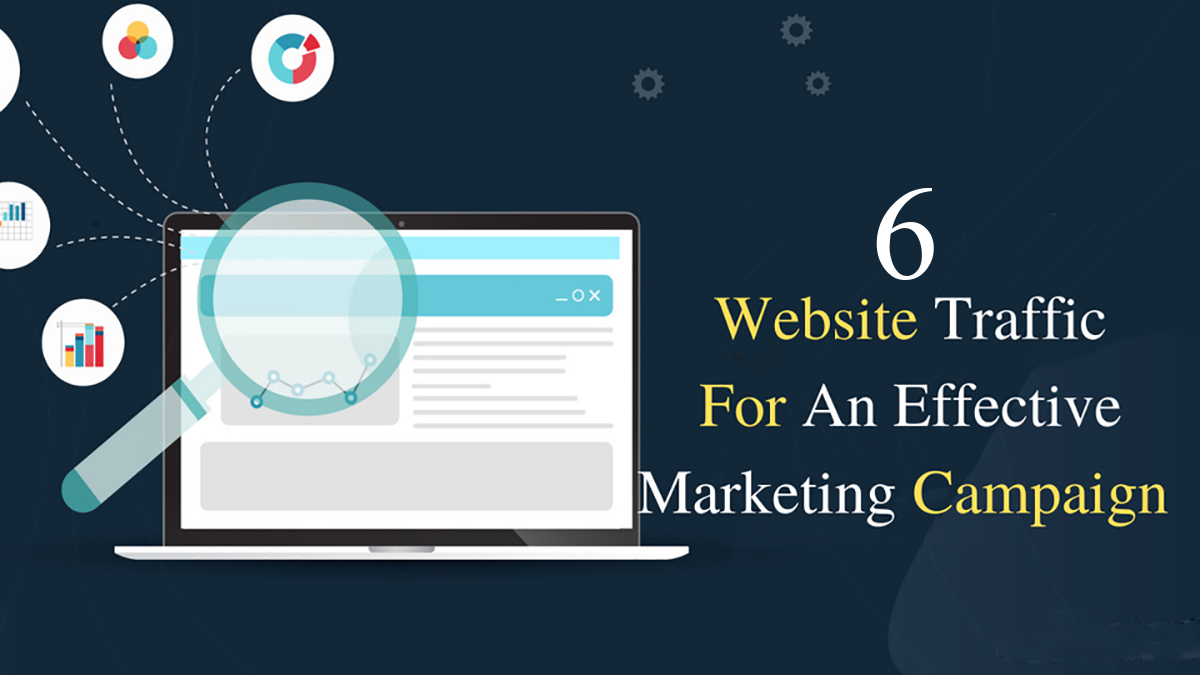Website traffic is one of the most important metrics in an online marketing campaign. But to fully understand it you need to break it down into several sub-metrics to fully understand it.
As a digital marketer, there are five important website metrics you need to understand to run a successful marketing campaign for your online business.
In this blog post, I am going to share some interesting website traffic for an effective campaign.
5 Essential Website Traffic For An Effective Marketing Campaign.
1. TOTAL UNIQUE VISITOR
The total unique value that each campaign generates is a good starting point to determine whether or not a campaign is successful or not. A unique visit is counted once For example, if a customer clicks on a Facebook ad and lands on your website, that initial visit counts, and other subsequent visits to the website will not be counted
Therefore you might be running a Facebook ad that drives 700 visits to your website and after some digging, you discover that 300 of those visits were the same person, so at the end of the day, you have 400 unique visits
The second metric you should keep in mind is the bounce rate which calculates how many visitors leave your website without clicking over to another page or performing any other action, such as submitting a form or completing another conversion goal.
Having a high bounce rate can affect your website’s SEO ranking and can make it appear lower in search results, which can make your traffic reduce. If you have a high bounce rate, it means your audience is not finding your content interesting or they are not finding what they are looking for on your website. It could also mean that your website is not user friendly.
To tackle this issue, you can go to your Google Analytics page and find out exactly which pages on your website have the highest bounce rate.
You can also enhance the content on your website so new visitors will be engaged and stay longer. Another thing you can do is to refine your audience targeting to better attract visitors that are interested in the products or services on your website.
3. REFERRAL TRAFFIC SOURCES.
By identifying where all your traffic comes from, you can determine which one is most valuable in terms of revenue generated and cost per visit.
For example, if you have an active Facebook page where you promote your products and services or a YouTube channel where you create how-to videos or product videos those are considered traffic sources. When a lot of visitors come to your website from a particular source, that is one of your top traffic sources.
This traffic helps you make sense of other data on your website. Let’s say your average session time is 2 minutes and 30 seconds. If you critically examine the traffic source associated with that session time data, you’ll get some truly valuable insight.
For example, your average session time from your youtube channel subscribers might be 3 minutes and 15 seconds while that from Facebook might be just 30 seconds.
By looking at the average session time per traffic source, you found out that your Youtube subscribers love engaging with your website more than visitors from Facebook.
This can help you can make you target more of your youtube subscribers by running ads to them. You can use Google Analytics, BuzzSumo etc to track different referral sources, from organic traffic from Google, social media embedded links on other websites
4. COST-PER-VIEW and REVENUE -PER-VIEW
This helps determine profitable every marketing campaign is, allowing you to properly budget and plan for growth.
For example, you ran a Facebook ads campaign that generated 50 sales with the value of 5000 dollars.
During this time, the Facebook campaign generated 500 visitors to your site. This means that your RPV for your Facebook campaign last month was $10 ($5000 / 500 = $10). While the CPV is determined by dividing the total amount spent in a particular channel by the number of visitors it drove.
5. Pageviews and AVD (average visitor duration)
This determines how many pages a visitor visit when they are on your site, how long they spent and what they do on your website. Do users leave without completing an action? Do they submit a form? Make a purchase?
6. Device Source
Device source is another metric you can use as input when trying to make your website more engaging. This can be used to find devices types like PC, tablets, or smartphones people use to access your website. In addition, you can see the top operating systems (iOS, Android, Windows) and top browsers (Chrome, Safari, and Firefox) being used to render your site.
Knowing this will allow you to optimize your website for the kind of devices it’s being accessed from.
You’ll be able to make changes to the design and content so that your site looks great on the devices most commonly used to access it. Devise source data may come in handy when you’re creating ad campaigns as well.

